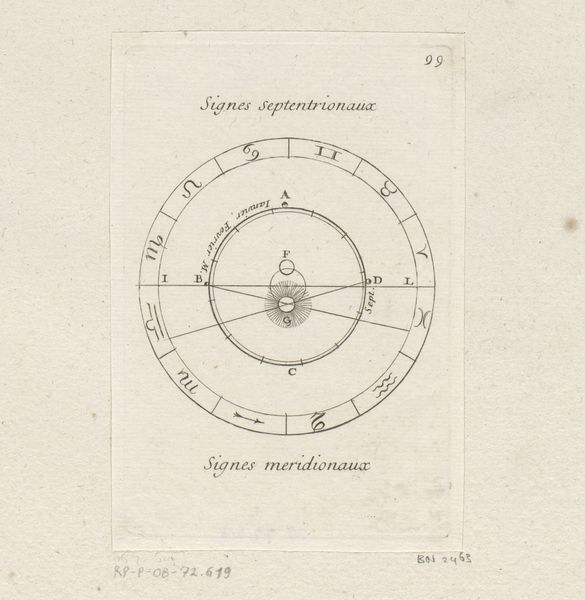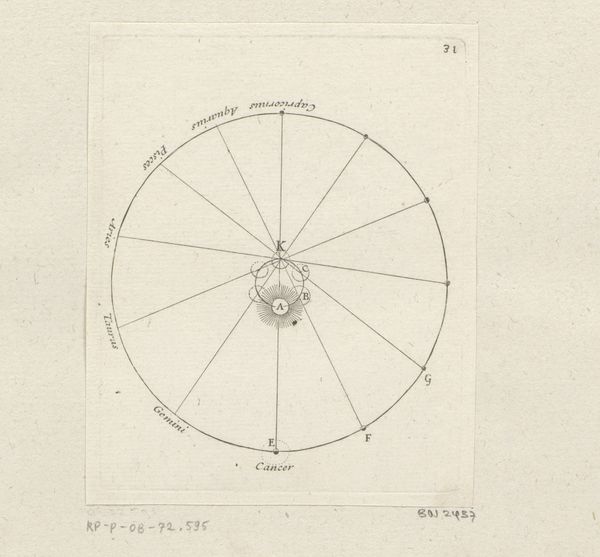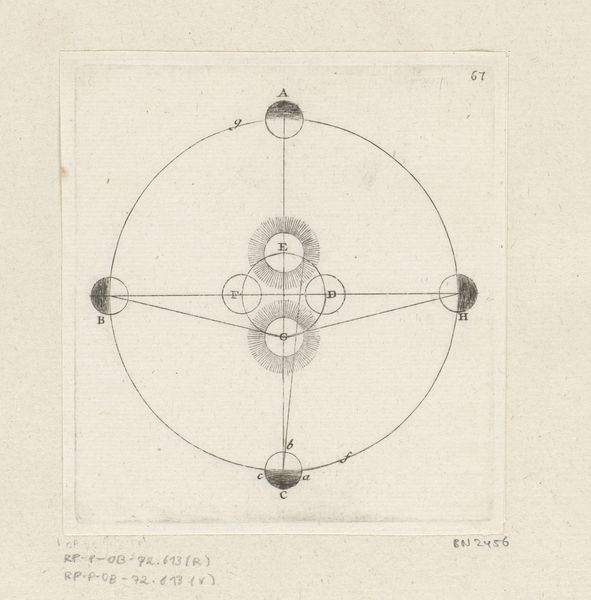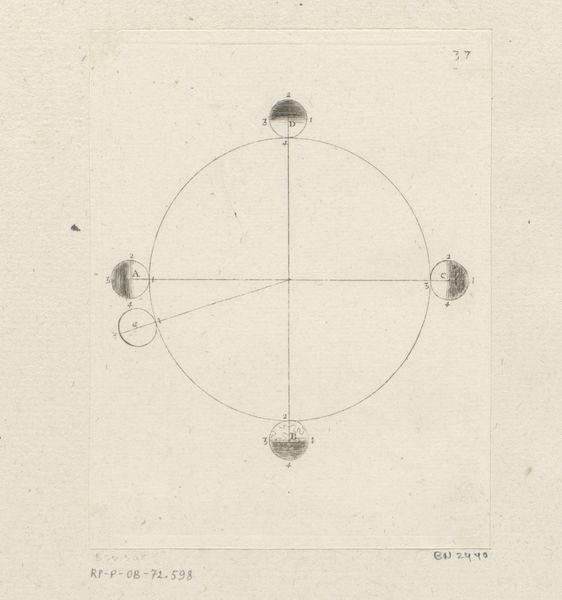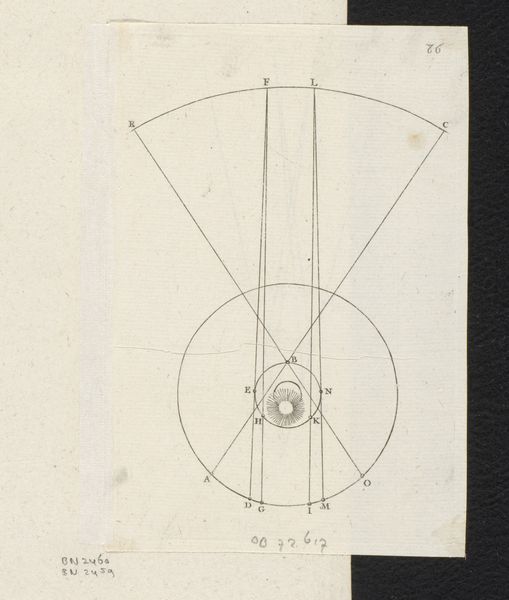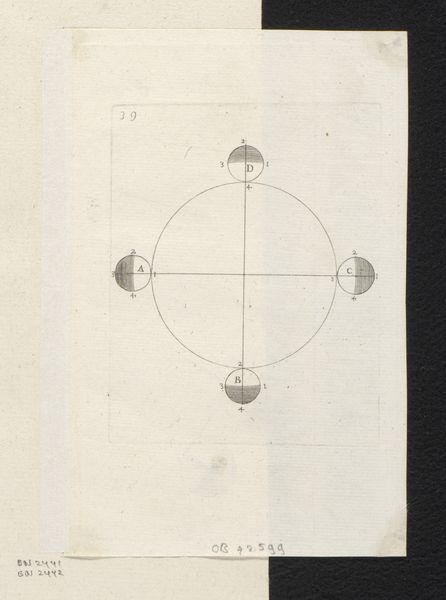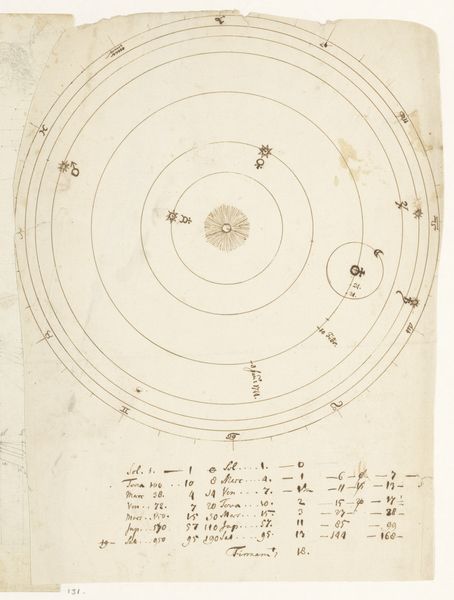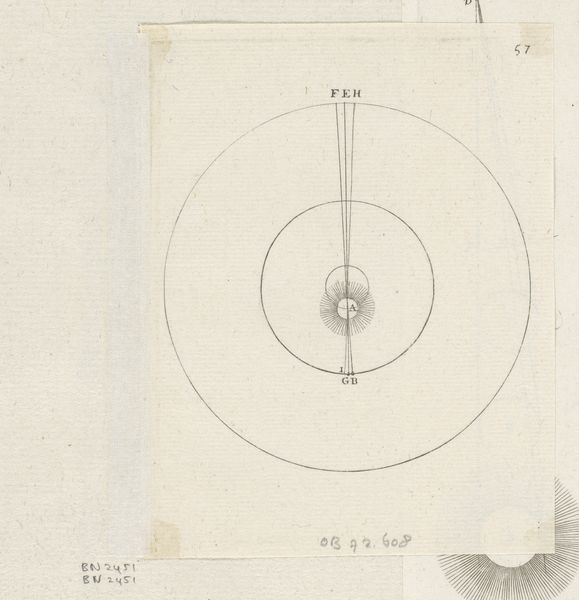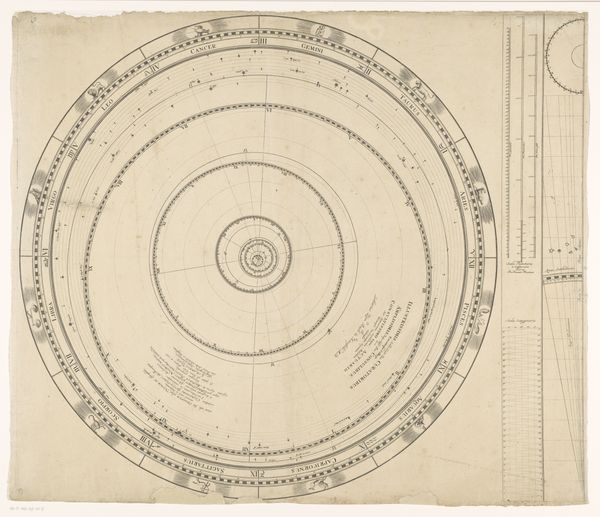
print, paper, engraving
#
baroque
# print
#
paper
#
geometric
#
engraving
Dimensions: height 121 mm, width 100 mm
Copyright: Rijks Museum: Open Domain
Curator: Let's consider this print, "Placement of the Earth in the Zodiac" by Sébastien Leclerc I, made in 1706. The medium is engraving on paper. Look closely at the meticulous lines used to construct the celestial diagram. It’s interesting to observe how Leclerc employs printmaking – a method readily available, and infinitely reproducible – to disseminate understandings about the cosmos. Editor: Yes, I notice the geometric precision. What's particularly fascinating to me is that Leclerc is trying to explain this huge idea of Earth’s place in the universe through such careful, controlled labor. What else do you see? Curator: Think about the paper itself, a common, commercially available substance, acting as the very foundation upon which scientific and religious beliefs are spread. Printmaking allowed knowledge – be it accurate or flawed by modern standards – to transcend aristocratic circles and enter the realm of public consumption, influencing how a growing populace comprehended their place within the grand cosmic architecture. It’s a stark contrast, the mass production of prints juxtaposed against the unique wonder of space! Editor: I see, so the very nature of this work, how it's made, makes a statement about how ideas were spread then. Curator: Exactly! Consider the engraving process—a skilled craftsman painstakingly incising lines into a metal plate, essentially mass-producing 'truth.' This engraving shows us more than just astronomy; it shows us how information and power circulated. It bridges the gap between 'high' science and everyday life via its chosen medium. Do you think this piece might make one question the traditional divide between art and craft? Editor: That's a really interesting perspective. I never really considered the class implications of the piece. I’ll definitely look at engravings differently now, keeping in mind their cultural influence. Curator: Precisely. By recognizing its materiality and the labor involved, we grasp a more complete understanding of its original function and ongoing influence.
Comments
No comments
Be the first to comment and join the conversation on the ultimate creative platform.
